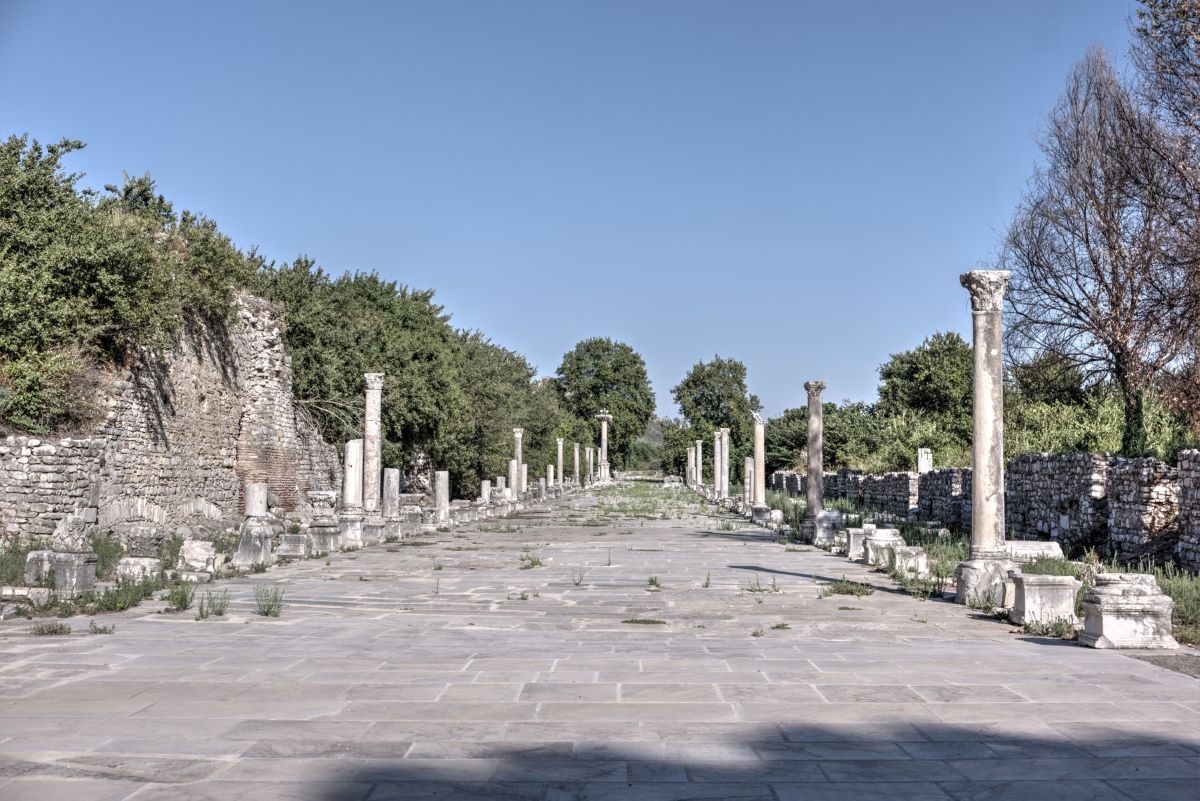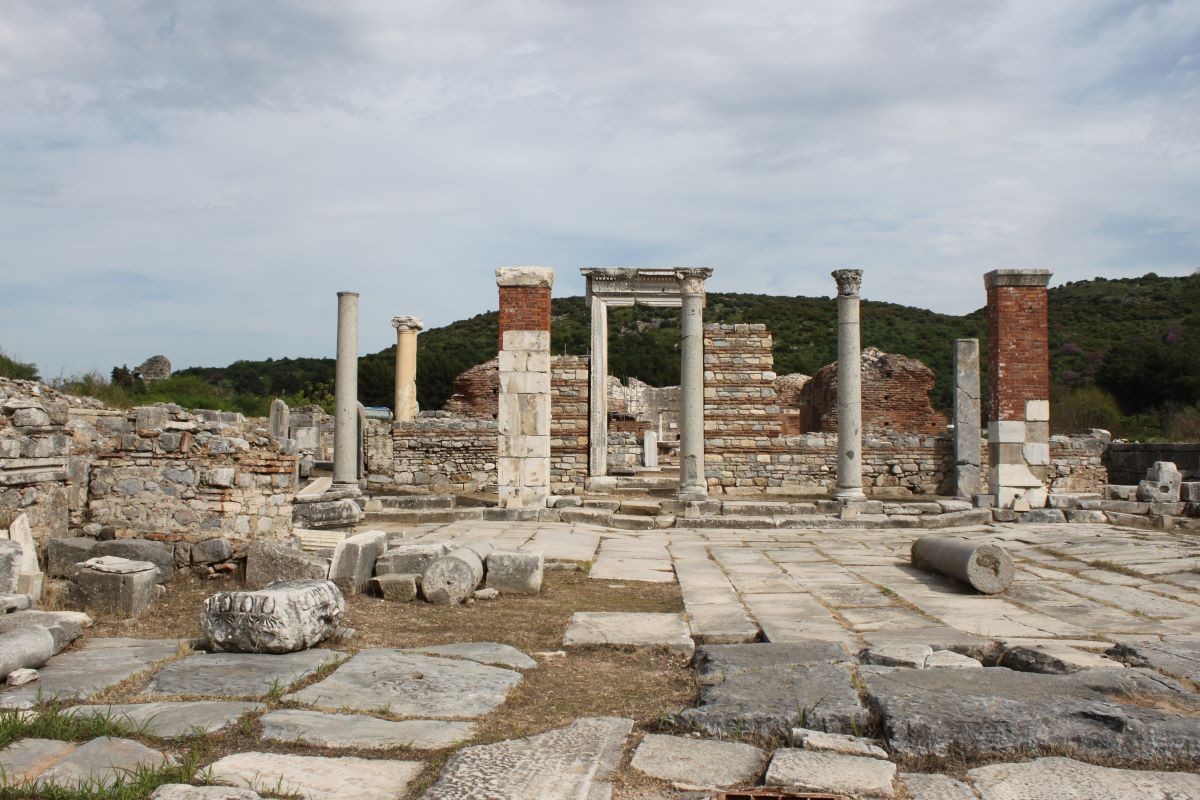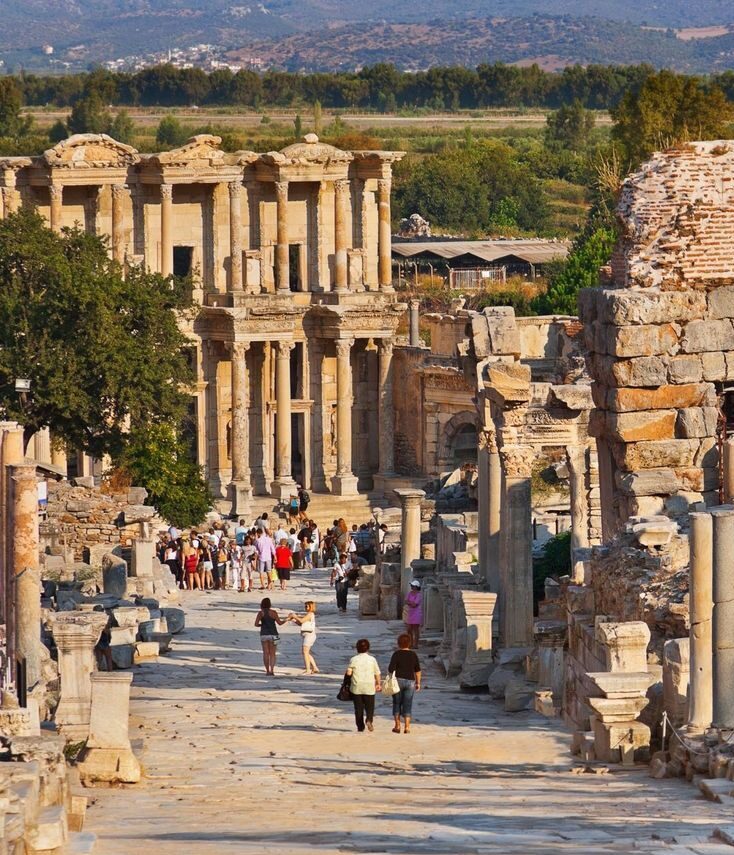The ancient city of Ephesus is a site of remarkable historical significance, with a…

Exploring the History and Architecture of Harbour Street in Ancient Ephesus
Ephesus was one of the most prominent ancient cities of the eastern Mediterranean. It was a major center of trade and commerce, and its harbor was one of the busiest in the region. The city’s most famous landmark is the Library of Celsus, but it was the city’s main thoroughfare, the Harbour Street, that connected the harbor to the city’s public buildings and religious centers. In this article, we will explore the history, architecture, and significance of Harbour Street and its neighboring structures in Ephesus.
Harbour Street was built during the Hellenistic period, around the 3rd century BC, and was subsequently expanded and rebuilt during the Roman period. It was a bustling thoroughfare lined with shops, restaurants, and public buildings and was the heart of the city’s commercial and social life. The street ran for about 500 meters from the harbor to the center of the city, passing through the commercial agora, the theater, the odeon, and the baths along the way.
During the Roman period, Ephesus was a major hub of trade and commerce. The city’s harbor was a vital gateway to the Mediterranean, and merchants from all over the world came to the city to trade their goods. Harbour Street was the main artery of this commercial activity, and the impressive structures that lined the street were a testament to the city’s wealth and prosperity.
The architecture of Harbour Street is a testament to the city’s rich cultural heritage. The street is lined with impressive buildings, many of which have been remarkably preserved. The commercial agora, for example, was a massive open-air market where merchants from all over the Mediterranean came to trade. The Agora was built in the 2nd century BC, and was one of the largest marketplaces in the ancient world. Today, the ruins of the Agora still stand, and visitors can wander among the crumbling columns and arches, imagining the bustling market that once filled the space.
Another impressive structure on Harbour Street is the Temple of Hadrian. This temple was built in honor of the Roman Emperor Hadrian in the 2nd century AD, and was one of the most elaborate structures in the city. The temple is notable for its intricate facade, which features a series of statues and reliefs depicting the emperor and various mythological figures. Today, the temple is partially restored, and visitors can admire its impressive architecture and learn about its rich history.
Other notable structures on Harbour Street include the Odeon, which was a small theater used for concerts and other performances, and the baths, which were a series of public baths that offered visitors a chance to relax and unwind after a long day of work or travel.
Harbour Street was not only a commercial hub, but also a center of cultural and intellectual life in the ancient world. The Library of Celsus, one of the most famous buildings in Ephesus, was located just off Harbour Street. The library was built in the 2nd century AD and was one of the largest and most impressive libraries of the ancient world. It housed thousands of scrolls and books, and was a center of scholarship and learning.
Harbour Street was also home to several religious buildings, including the Temple of Artemis and the Temple of the Sebastoi. The Temple of Artemis was one of the Seven Wonders of the Ancient World and was one of the largest and most impressive temples in the ancient world. The Temple of the Sebastoi, also known as the Temple of the August Ones, was built in honor of the Emperor Augustus and was one of the most important religious sites in Ephesus.
Ephesus was one of the most prominent ancient cities of the eastern Mediterranean. Located on the coast of what is now Turkey, it was a major center of trade and commerce, and its harbor was one of the busiest in the region. The city’s most famous landmark is the Library of Celsus, but it was the city’s main thoroughfare, the Harbour Street, that connected the harbor to the city’s public buildings and religious centers. In this article, we will explore the history, architecture, and significance of Harbour Street and its neighboring structures in Ephesus.
Harbour Street was built during the Hellenistic period, around the 3rd century BC, and was subsequently expanded and rebuilt during the Roman period. It was a bustling thoroughfare lined with shops, restaurants, and public buildings and was the heart of the city’s commercial and social life. The street ran for about 500 meters from the harbor to the center of the city, passing through the commercial agora, the theater, the odeon, and the baths along the way.
During the Roman period, Ephesus was a major hub of trade and commerce. The city’s harbor was a vital gateway to the Mediterranean, and merchants from all over the world came to the city to trade their goods. Harbour Street was the main artery of this commercial activity, and the impressive structures that lined the street were a testament to the city’s wealth and prosperity.
The architecture of Harbour Street is a testament to the city’s rich cultural heritage. The street is lined with impressive buildings, many of which have been remarkably preserved. The commercial agora, for example, was a massive open-air market where merchants from all over the Mediterranean came to trade. The Agora was built in the 2nd century BC, and was one of the largest marketplaces in the ancient world. Today, the ruins of the Agora still stand, and visitors can wander among the crumbling columns and arches, imagining the bustling market that once filled the space.
Harbour Street and its neighboring structures in Ephesus offer a fascinating glimpse into the rich cultural, commercial, and religious heritage of the ancient city. The street’s impressive architecture and rich history provide a testament to the city’s prosperity and power during its peak.
Today, the ruins of Harbour Street and its neighboring structures continue to attract visitors from around the world. The area has been designated as a UNESCO World Heritage Site and is a popular destination for tourists who come to explore the ancient city’s history and architecture. The well-preserved ruins offer a glimpse into the past and allow visitors to immerse themselves in the rich cultural heritage of Ephesus.
The Harbour Street and its neighboring structures in Ephesus are a remarkable testament to the city’s rich cultural heritage. The street’s impressive architecture, commercial activity, and religious significance offer a glimpse into the past and provide a fascinating insight into the ancient world. The area is a must-visit destination for anyone interested in history, architecture, or ancient culture and is sure to leave a lasting impression on all who visit.




This Post Has 0 Comments